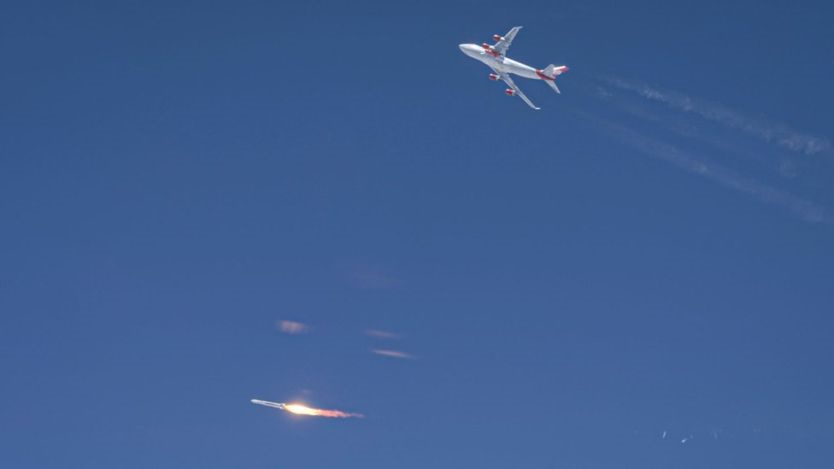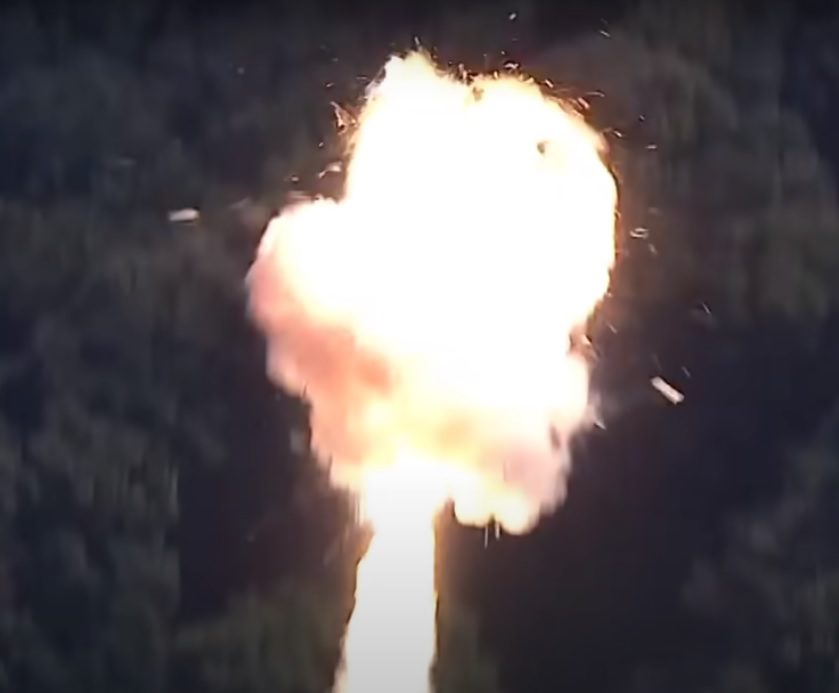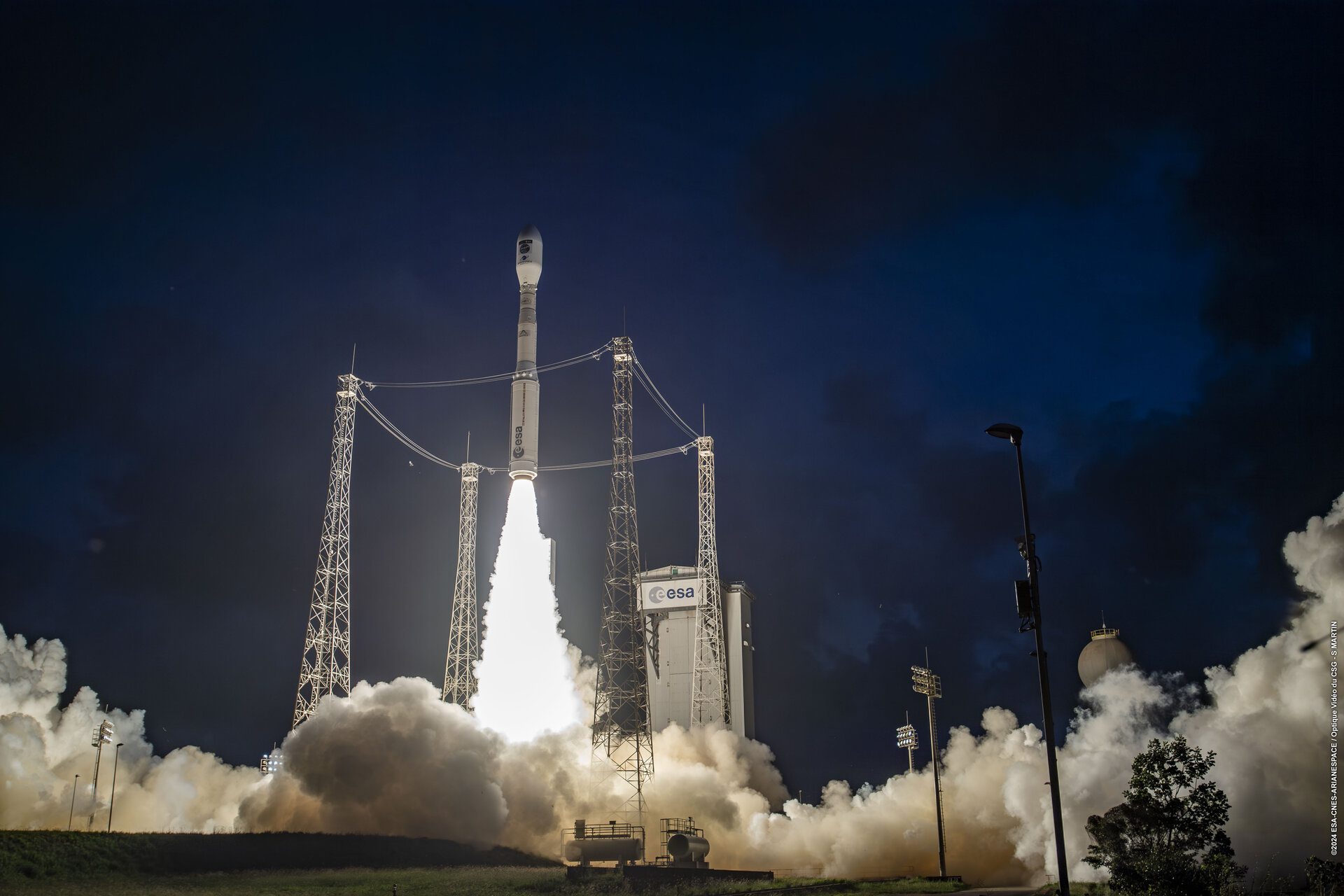Virgin Orbit suffered a failure in its attempt to launch the airdropped LauncherOne small launch vehicle on its maiden flight. After a one-day delay due to a sensor issue, Virgin Orbit’s Cosmic Girl Boeing 747 carrier aircraft lifted off from Mojave Air and Space Port in California at 1856 GMT on 25 May. It proceeded south of the “Channel Islands” in the Pacific Ocean. Underneath one of its wings was the 21 m long, liquid fuel LauncherOne rocket.
LauncherOne was dropped from the Boeing 747 at 1950 GMT. After five seconds, ignition of the first stage NewtonThree engine took place. The burn lasted about four seconds, but the firing was then terminated via an automatic engine shutdown after an anomaly was detected. The LauncherOne two-stage vehicle along with its dummy payload dropped into the Pacific Ocean. The Boeing 747 subsequently returned safely to the Mojave base. The rocket was on track when the failure occurred.
While Sir Richard Branson is the founder and leader of the company, it was left to his lieutenant, Virgin Orbit CEO Dan Hart, to make the best of the situation.
“Test flights are instrumented to yield data and we now have a treasure trove of that. We accomplished many of the goals we set for ourselves, though not as many as we would have liked,” he said.
For Sir Richard, this was the second bit of bad news of the week. He was forced to sell part of Virgin Group’s stake in Virgin Galactic, the suborbital sister firm of Virgin Orbit. The sale raised US$366 million – less than he had hoped for – and now denies Virgin majority control. It remains the largest shareholder with a 40 per cent stake.
Virgin said it would use the proceeds to “support its portfolio of global leisure, holiday and travel businesses that continue to be affected by the unprecedented impact of Covid-19”. Its airlines, Virgin Atlantic and Virgin Australia, are expected to receive the lion’s share.







